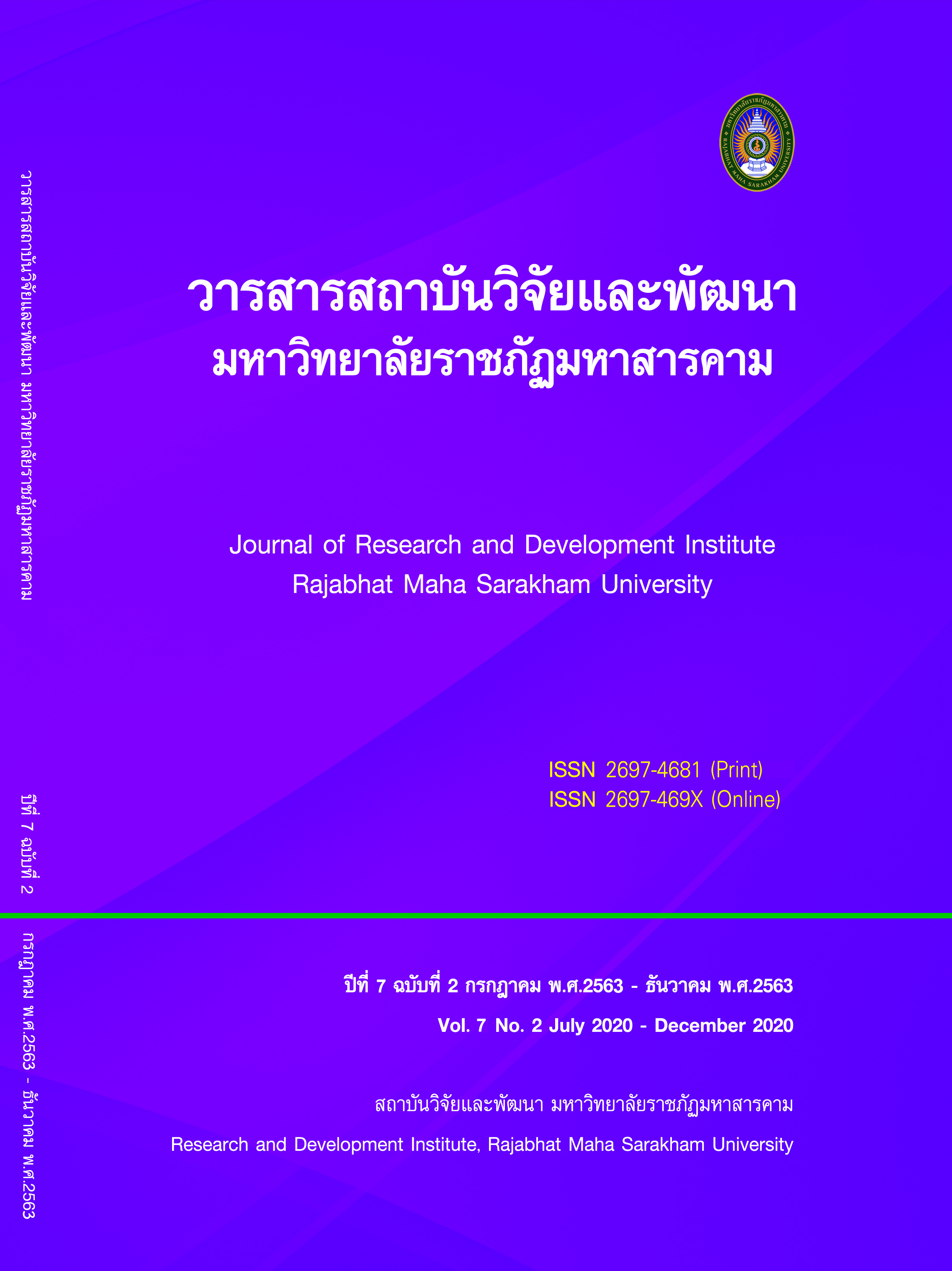Policy Process for Labor Shortages solving Problems "Footware Industry"
Abstract
Abstract
The purposes of this study were to (1) clarified policy process for solving labor shortage in foot ware industry (2) examined the outcomes of clarified policy process for solving labor shortage in foot ware industry ( 3) presented best practices of policy process for solving labor shortage in foot ware industry.
This was qualitative research, using in depth interview, documentary research and non-participatory observation as data collection means. Key persons were 18 purposive sampling executives and labor leaders of big size medium and small size of foot ware industry. Moreover, 9 high ranking officers attached to Ministry of Labor were also in-depth interviewers and 7 academics were members of Focus group consolations.
The outcomes were; 1) policy process for solving labor shortage in foot ware industry top down formations, could not reached an objective since lacking of participation of private and labor sectors. 2) the main obstacles of policy implementation was lacking of participation of private and labor sectors and high expectations of small and medium enterprise and labors.
3) best practices of policy process were created consensus among policy community, changing leader and leadership persuasion by Ministry of Labor, competitive capabilities creations of executives and labors, vocational studies development , public and private sectors collaboration, organization and budgeting structures correlated with reformation, social welfares and social insurance development , information management , skilled labor upgrading and recruitment process development.
References
References
Bank of Thailand. (2013) . Bank of Thailand academic seminar 2013. [Online]. https://www.bot.or.th/Thai/MonetaryPolicy/ArticleAndResearch/Pages/Symposium2556.aspx. [12 December 2013].
Carolyn M. Veneri, (1999) Here today Job tomorrow Amazon books. UK:15-16.
Chanin Jitkomut. (2015) . Thai shoe manufacturers, SME groups, are gradually closing their businesses after they cannot bear the burden of increasing costs. [Online] https://mgronline.com/smes/detail/9580000026223. [3 August 2015].
Chanin Jitkomut. (2016) . "SME" Thai shoes cough up. [Online]. https://www.thairath.co.th/content/802892 . [6 December 2016]
Department of Labor Market Research, Ministry of Labor. (2017) . Information on graduates and the projected labor market entry in 2017. Bangkok: Division of Labor Market Information Administration, Department of Employment.
Kaewkwan Tangtipongkul . (2016) . Policy Development for Migrant Workers Management Under the ASEAN Community for Thai Economic and Social Security in Thailand. Bangkok: International Institute for Trade and Development (Public Organization) .
Kanchit Chanthanapornchai (2018) . Economic base newspaper interview, raising the level of Thai shoes. [Online] https//sites.google .com fashion shoes approached. [23 December 2018]
Kanchit Chanthanapornchai. (2014) . Digital Commerce. [Online] https://www.ditp.go.th/contents_attach/85291/85291.pdf [20 August 2014]
Kanchit Chanthanapornchai. (2016) . Thai Shoe Industry Promotion Association pushes SME to create a name. [Online] https://www.smethailandclub.com/news-657-id.html. [12 September 2016].
National Statistical Office. (2016) . Survey of informal workers, 2015. Bangkok: National Statistical Office.
National Statistical Office. (2018). Survey of informal workers, 2018. Bangkok: National Statistical Office
Office of Industrial Economics (2015) . A complete study report, a project to study the effects of global supply chain from bilateral and multilateral free trade agreement negotiations on Thai industry. Bangkok: Office of Industrial Economics.
Office of Industrial Economics. (2016) . A complete report on the Thai industrial preparation project to support regional connectivity with the digital economy. Bangkok: Office of Industrial Economics, Ministry of Industry.
Pornpimol Plangsriskul, Piyakorn Whangmahaporn,Somchai Pakapaswiwat and Surachai Sirikrai. (2017) . “Implementation of Thai Labour Policy In Integrating into Asean Economic Community”. Governance Journal, 6 (2) :284-306.
Prasong Kanlayanatham. (2550) . An analysis of educational policy-making processes in the 10th National Economic and Social Development Plan. Bangkok:Chulalongkorn University.
Primark and BSR (2010) . BUSINESS FOR SOCIAL RESPONSIBILITY (BSR) . [Online] https://www.primark.com/en/primark-cares/partners/bsr
SCB Economic Intelligence Center Insight (2015). Dissecting business strategies to conquer retirement age. [Online] https://www.scbeic.com/th/detail/file/product/1375/e4hwh2n6ry/EIC_insight_Thai_aging_Q2_2015.pdf [30 September 2015]
Somkiat Chayasriwong (2013) . The Refusing Life of Permanent Secretary 300. Bangkok: People Media.
Somnuk Aujirapongpan, Montri Atirattanachai and Pongpan Compan. (2012) . “A Study of Labor Demand on Frozen Seafood Entrepreneurs in Songkhla Province”. WMS Journal Management Walailak University, 1 (2) :1-8
Somsajee Siksamat. (2016) . The impact of the minimum wage hike to 300 baht. [Online] https://www.bot.or.th/Thai/MonetaryPolicy/ArticleAndResearch/DocumentEconomicSeminar/Labour300.pdf. [20 December 2016]
Thasanee Satimanon (2017). “Thailand’s Labor Mismatch: Contemporary Situations and Solutions” NIDA Case Research Journal, 9 (1):1-38.
Thomas Cherkos (2011). Performance Analysis and Improvement of Ethiopian Leather Footwear Factories: With Special Reference to Anbessa Shoe S.C. A thesis submitted to the school of Graduate Studies of Addis Ababa University in partial fulfillment of the requirements for the Degree of Masters of Science in Mechanical Engineering (Industrial Engineering Stream).
Thunyalak Weerasombat. (2018) . “A Synthesis of Research on the Quantity and Quality of Thai Labour in Thai Manufacturing Industries”. Journal of Social Work, 26 (2) :1-40.
Wittayakorn Chiengkul. (2010) . Report of the State of Thai Education 2008/2009 : The Role of Education and Economic and Social Development. Bangkok: Educational Information Center, Ministry of Education.
Xiaobo Zhang, Jin Yang, Shenglin Wang. (2011). “China Has Reached the Lewis Turning Point”. China Economic Review, 22 (4) :542-554.
Downloads
Published
How to Cite
Issue
Section
License
Articles that are published are copyrighted by the authors of the articles







